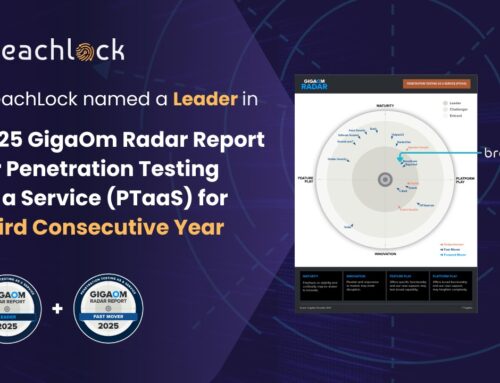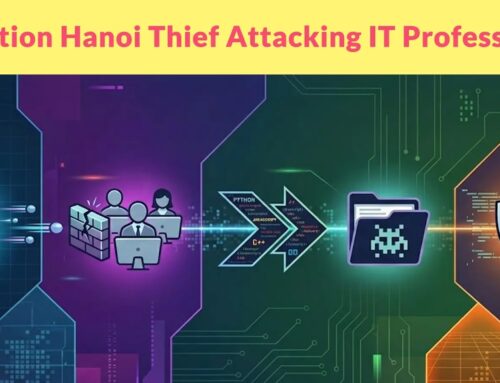
New Chinese Nexus APT Hackers Attacking Organizations to Deliver NET-STAR Malware Suite
In the high-stakes world of cybersecurity, a new and concerning threat actor has emerged from the shadows, directly impacting critical infrastructure and sensitive data across multiple sectors. Recent intelligence points to a surge in sophisticated attacks attributed to the “Chinese Nexus” APT (Advanced Persistent Threat) group. This clandestine entity is now actively deploying the formidable NET-STAR malware suite, targeting organizations vital to global finance, telecommunications, and manufacturing. Understanding their tactics and bolstering our defenses against this evolving threat is paramount.
The Rise of the Chinese Nexus APT
Security teams worldwide have observed a significant escalation of covert operations orchestrated by the Chinese Nexus APT. This group distinguishes itself through its highly targeted campaigns, demonstrating a clear focus on specific industries. Their operational methodologies suggest a well-resourced and persistent adversary, capable of developing and deploying advanced malware payloads like NET-STAR.
Targeted Sectors and Initial Attack Vectors
The Chinese Nexus APT is not indiscriminate in its attacks. Its primary targets include:
- Finance: Organizations handling financial transactions, investment data, and banking infrastructure.
- Telecommunications: Companies providing communication services, managing network infrastructure, and handling sensitive user data.
- Manufacturing: Industries involved in critical production, proprietary intellectual property, and supply chain management.
Their initial foothold techniques are typical of sophisticated APT groups, often leveraging:
- Spear-Phishing Emails: Highly crafted and personalized emails designed to trick employees into revealing credentials or executing malicious attachments.
- Compromised VPN Credentials: Gaining access through pre-obtained or stolen virtual private network login details, allowing them to bypass perimeter defenses.
Unpacking the NET-STAR Malware Suite
While specific details on the NET-STAR malware suite are still emerging, its deployment by a sophisticated APT group like the Chinese Nexus indicates it is likely a multi-functional toolkit designed for persistent access, data exfiltration, and potentially sabotage. Given the nature of APT operations, NET-STAR likely possesses capabilities such as:
- Remote Access Trojan (RAT) functionalities: Enabling full control over compromised systems.
- Information Stealer: Designed to harvest sensitive data, including credentials, intellectual property, and financial records.
- Persistence Mechanisms: Ensuring long-term access to target networks even after reboots or security cleanups.
- Evasion Techniques: Employing methods to bypass common security solutions, including antivirus and intrusion detection systems.
Remediation Actions and Proactive Defense
Organizations in the targeted sectors and beyond must take immediate and decisive action to defend against the Chinese Nexus APT and the NET-STAR malware. A multi-layered security approach is essential.
- Strengthen Email Security: Implement advanced anti-phishing solutions, conduct regular employee training on identifying suspicious emails, and enforce strict email filtering policies.
- Multi-Factor Authentication (MFA): Mandate MFA for all remote access services, especially VPNs, and privileged accounts. This significantly reduces the impact of compromised credentials.
- Patch Management: Proactively identify and patch vulnerabilities in all software and systems, particularly those exposed to the internet. Regularly consult databases like the National Vulnerability Database for known threats and apply patches without delay.
- Network Segmentation: Isolate critical systems and data from the broader network to limit lateral movement in case of a breach.
- Endpoint Detection and Response (EDR): Deploy and actively monitor EDR solutions to detect and respond to suspicious activity on endpoints.
- Intrusion Detection/Prevention Systems (IDS/IPS): Ensure these systems are up-to-date and configured to detect known malicious patterns and behaviors.
- Security Awareness Training: Continuously educate employees on social engineering tactics, secure browsing habits, and reporting suspicious activities.
- Incident Response Plan: Develop and regularly test a comprehensive incident response plan to ensure a swift and effective reaction to a security breach.
- Threat Intelligence: Subscribe to and integrate high-quality threat intelligence feeds to stay abreast of new tactics, techniques, and procedures (TTPs) used by APT groups like the Chinese Nexus.
Stay Vigilant, Stay Secure
The emergence of the Chinese Nexus APT and the deployment of the NET-STAR malware suite underscore the relentless and evolving nature of cyber threats. For organizations in finance, telecommunications, and manufacturing, the warning is clear: elevate your security posture. Proactive defense, robust incident response, and continuous vigilance are no longer optional but critical for safeguarding sensitive assets and maintaining operational integrity against such sophisticated adversaries.





